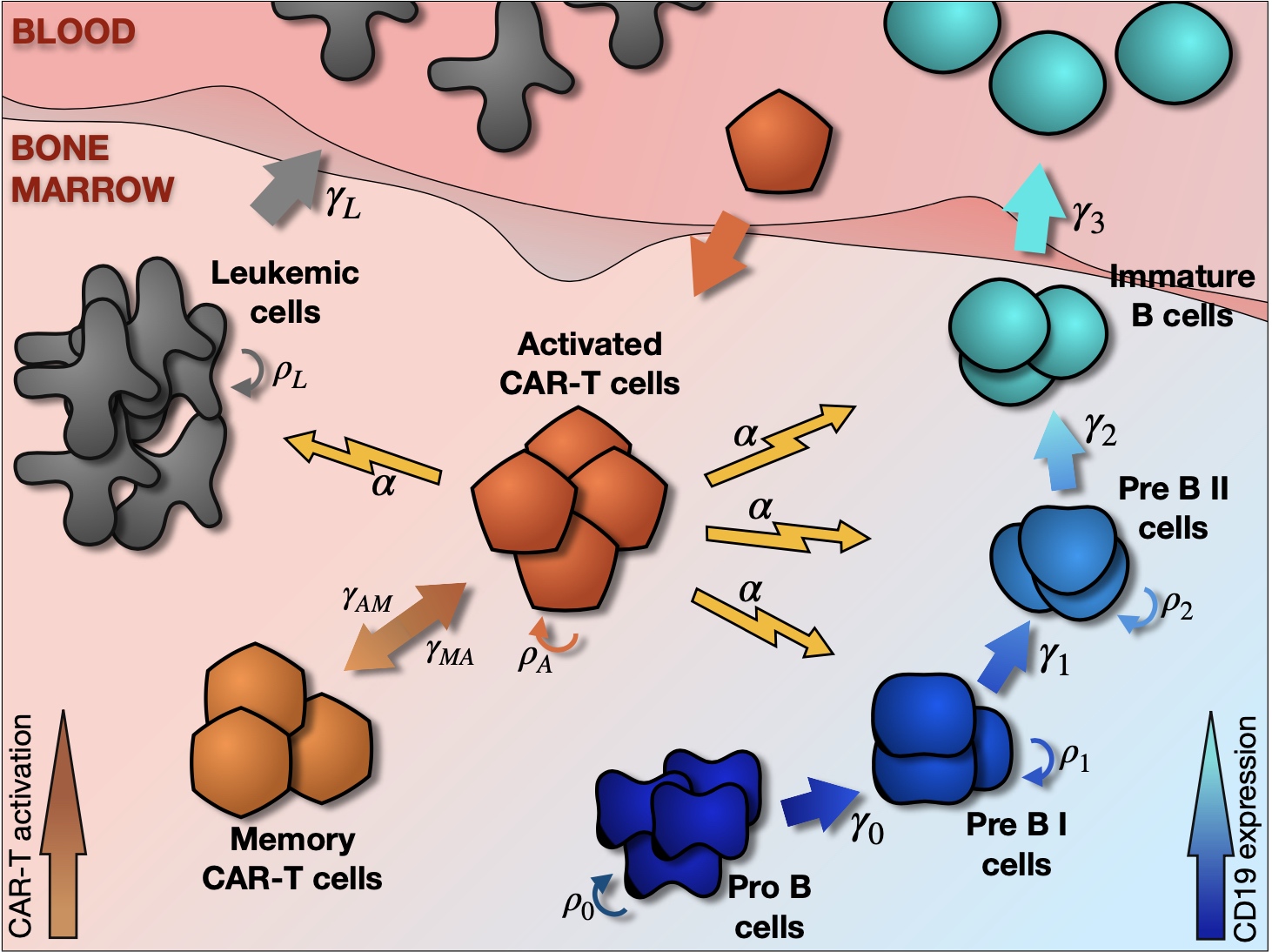International Journal of Molecular Sciences. Biochemistry & Molecular Biology
Chimeric Antigen Receptor (CAR) T-cell therapy has demonstrated high rates of response in recurrent B-cell Acute Lymphoblastic Leukemia in children and young adults. Despite this success, a fraction of patients’ experience relapse after treatment. MOLAB researchers have developed a mathematical model that represents the action of this therapy in the bone marrow, with the aim of providing a mechanistic explanation of the clinical features and suggesting hypothesis and alternatives to improve the outcome.
The mathematical models consists of seven ordinary differential equations that include the development of healthy B lymphocytes, the growth of leukemic cells and the action of CAR T-cells, split in activated and memory phenotypes. Building on previous works of B-cell development and T-cell response, the model provides a plausible description of the dynamics of the various cellular compartments in bone marrow after CAR T infusion, and is able to recover clinical features reported by real-world data, such as the fact that the dynamics of CAR T product and disease are independent of the dose injected, initial B-cell load, and leukemia burden. The model also stresses the importance of product attributes in determining therapy outcome, and provides insight into the utility of second dosage schemes.
This work has been recently published in the International Journal of Molecular Sciences, placed in Q1 (74/297) in the category of “Biochemistry & Molecular Biology”.
A Mathematical Description of the Bone Marrow Dynamics during CAR T-Cell Therapy in B-Cell Childhood Acute Lymphoblastic Leukemia
Álvaro Martínez-Rubio, Salvador Chulián, Cristina Blázquez Goñi, Manuel Ramírez Orellana, Antonio Pérez Martínez, Alfonso Navarro-Zapata, Cristina Ferreras, Victor M. Pérez-García, María Rosa
Int. J. Mol. Sci. 2021, 22(12), 6371; https://doi.org/10.3390/ijms22126371














